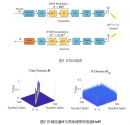Oh it's a startup too. Damn. Theybare ahead of CAS, ITER, Princeton.
You are using an out of date browser. It may not display this or other websites correctly.
You should upgrade or use an alternative browser.
You should upgrade or use an alternative browser.
News on China's scientific and technological development.
- Thread starter Quickie
- Start date
Partially funded by MihoyoOh it's a startup too. Damn. Theybare ahead of CAS, ITER, Princeton.
supercat
Colonel
Huawei's net profit rose 564% in the first quarter and is considering charge a fee for some apps in its app store.
Huawei Weighs App Store Fees as It Surpasses iPhone in China
- Chinese firm is looking at a lower fee structure than Apple
- Huawei’s profit surged 564% as it reclaimed premium share
I used to be worried about Peak Oil and EROEI, but with China at the helm, I worry no longerAccording to this report, China is 10-15 years ahead of US in the construction of 4th generation nuclear reactors, and China is planning to build 150 nuclear power plants by 2035.
Researcher Liu Lei and Professor Zhang Chaoyang from the School of Information and Electronics have made breakthrough progress in multi-carrier modulation technology
Recently, Liu Lei, a researcher at the School of Information and Electronic Engineering of Zhejiang University, and Professor Zhang Chaoyang, in collaboration with Chi Yuhao and Li Ying at the School of Communication Engineering of Xidian University, have made breakthrough progress in new multi-carrier modulation technology. The relevant research results were published in the authoritative wireless communication journal " IEEE Wireless Communication Letters " () under the title " Interleave Frequency Division Multiplexing " .
Background : In recent years, with the increasing number of high-speed mobile communication applications ( such as high-speed rail, low-orbit satellites, etc. ) , the existing orthogonal frequency division multiplexing (OFDM) has been severely affected by inter-carrier interference, resulting in performance degradation. To solve this problem, in 2017 , Cohere , a US company, proposed the orthogonal time-frequency-space (OTFS) modulation technology; Huawei proposed the analog radio frequency division multiplexing (AFDM) modulation technology in 2021. The core principle of OTFS and AFDM is to construct a sparse equivalent channel matrix to achieve a balance between performance and complexity. It is foreseeable that in the future 6G technical standards, modulation technologies that can support static and high-speed mobile communications will occupy an important position. The 6G communication standard patent layout report released by the State Intellectual Property Office in 2023 pointed out that in OTFS technology, Cohere, a US company, has a large number of high-quality basic patents, accounting for 68.9% of the world's patent applications , and has formed a certain technical barrier. Although Chinese universities have certain R&D capabilities in the field of OTFS technology, the patent risk is relatively high because they cannot bypass the basic patents.
Challenges and goals : Currently, OTFS and AFDM have not fundamentally solved the public problem of non-stationarity of time-varying multipath channels, and are also facing the challenge of lack of efficient and low-complexity detection algorithms. Therefore, it is urgent to explore a new generation of multi-carrier modulation technology, study the statistical stabilization mechanism of channels, overcome the non-stationarity problem of time-varying multipath channels, and achieve high-speed, high-reliability information transmission close to the capacity limit of time-varying multipath channels.
IFDM modulation : To address this technical challenge and break through the blockade of OTFS technology patents, this work first proposed a new interleave frequency division multiplexing (IFDM) modulation technology ( Figure 1) . Through the simple structure of inverse Fourier transform and random interleaving, a random fully dense equivalent channel matrix ( Figure 2) was innovatively constructed to ensure that the signal undergoes a sufficient statistically stable channel fading process, thereby approaching the time-varying multipath channel capacity.

China has developed world's first 6000m deep sea heavy duty mining truck
I think the story of China's focus on deep seabed mining is out there already
focusing on the key links of exploration, collection, and transportation of deep-sea minerals from 3,000m to 6,000m.全球首台 6000 米级智能电驱动深海重载采矿车辆平台于 6 月 17 日在长沙通过项目综合验收,部分成果填补了国际空白,极大地推动我国深海矿产资源开发产业建设。
I think the story of China's focus on deep seabed mining is out there already
PeoplesPoster
Junior Member
I don’t think companies in China really care about access to American capital at this point and may even consider it a negative.
A nice little summary of all the medical advancements made in China recently
